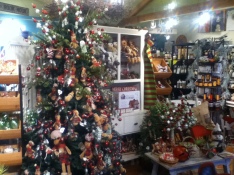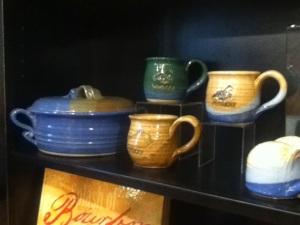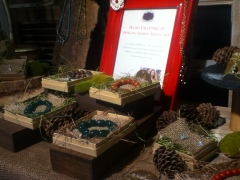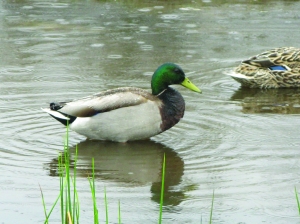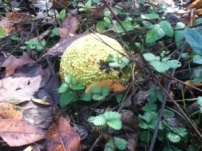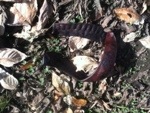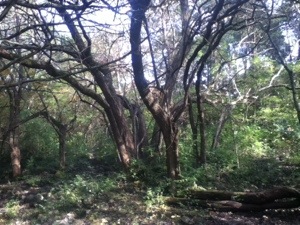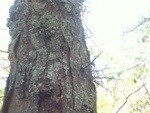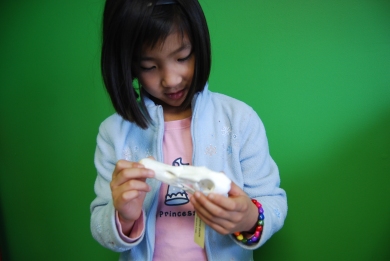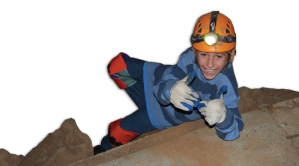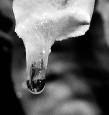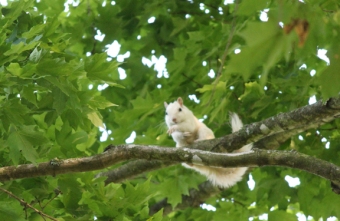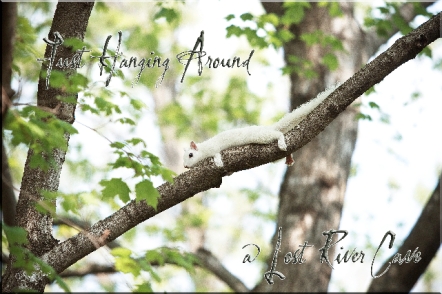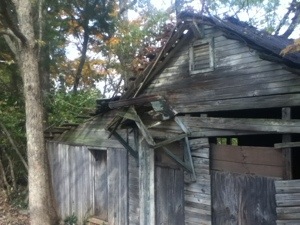
What was this?
Clinging to the edge of the limestone bluff stands a building that looks to be well over a century old. The wooden planks of its front wall stand crooked and slanted as over time they have grown tired and decided to lean on one another for a little rest. The tin roof is peeling and covered with Virginia Creeper that turns a bright red every fall season. For years, as I’ve walked past this old building I have wondered how long it has been standing there, and how many memories are contained within its three remaining walls. Beneath the floor, visible through the holes in the wood, is an aged metal water tank sitting conveniently next to a wet-weather spring. At the bottom of the cliff just above the river is an equally ancient structure not much larger than a doghouse that served as a pump house. At times of year when the spring wasn’t running, water could be pumped up to the storage tank above. Over the years working at Lost River Cave I have heard many questions about that building as well as numerous theories as to how that building may have been used.
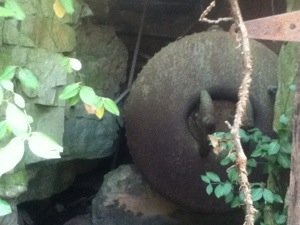
The old water tank.
A common answer is that that building was the honeymoon suite. There was a tourist court operating at Lost River Cave during the 1930’s through the 1950’s featuring several cabins that visitors could rent and spend the night. This particular building is larger and constructed differently than the standard cabins were. It has multiple rooms, and was the only one with water. The idea of this being a “deluxe” version of the accommodations at Lost River Cave is a realistic idea, and it has been reported as such by visitors who have been here in the old days.
The second theory I have heard, and this one was speculation based on the structure of the building, is that this building might have been something along the lines of a general store for use by those staying at the tourist court. This idea was proposed by a guest on one of my tours that had a hobby involving old buildings and their uses. He said that the size and shape of the front window led him to believe that customers were once served from that window.
The story I heard thirteen years ago, is the one I personally like to rely on the most. It was the first year that we were open for the winter. That year winter was an incredibly slow season for Lost River Cave business. Over the winter, we averaged about six people over the weekends, and zero people throughout the week. I spent a lot of time trying to find ways to spend my time that season. Usually on Saturday, I would be the only person on staff. I would come in, get the cave and boats ready for any tours that might run, then head up and open the gift shop. As the Friday closer usually had plenty of free time too, the visitor center was always clean and ready to go when I showed up. I would double check that the gift shop was ready, get the cash register ready, and open up for business. Around 11:30 or 12:00 I would take a lunch break, putting a sign on the window letting people know when I would be back. Every once in a while, usually after lunch, someone would come in for a tour. This day, the people that came in were not interested in a tour of the cave, instead they were giving each other a tour of the house that had become our gift shop.
“This was Mom’s room, over there was the kitchen, my room was over here. . .”
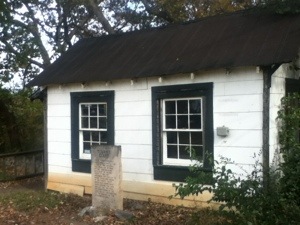
The remaining tourist cabin.
I knew that I had a great resource on my hands, so I started asking them questions. It turned out, not only did they once live in the building, but their parents owned and operated Lost River Cave back in the old days. Among the other questions, I asked about that old run down building. She told me that when she was young, she worked at Lost River Walnut Company and that she sat in that very building husking walnuts.
Lost River Walnut Company would collect walnuts from the numerous black walnut trees that grew in the Lost River Cave Valley and would also buy walnuts brought in by locals. The walnuts had a number of uses. Not only are they a healthy nut to eat, but the husks have been used to produce dyes, inks, and stains. Iodine can be extracted from the hulls, and the shells, when pulverized, were used to stuff teddy bears and pillows.
So, with three stories, the question still remains, what exactly was that building used for. My best answer is that it could have very well been used as all of the above at different times. This would explain why visitors who had been here at different times in the past remember it for different purposes.
